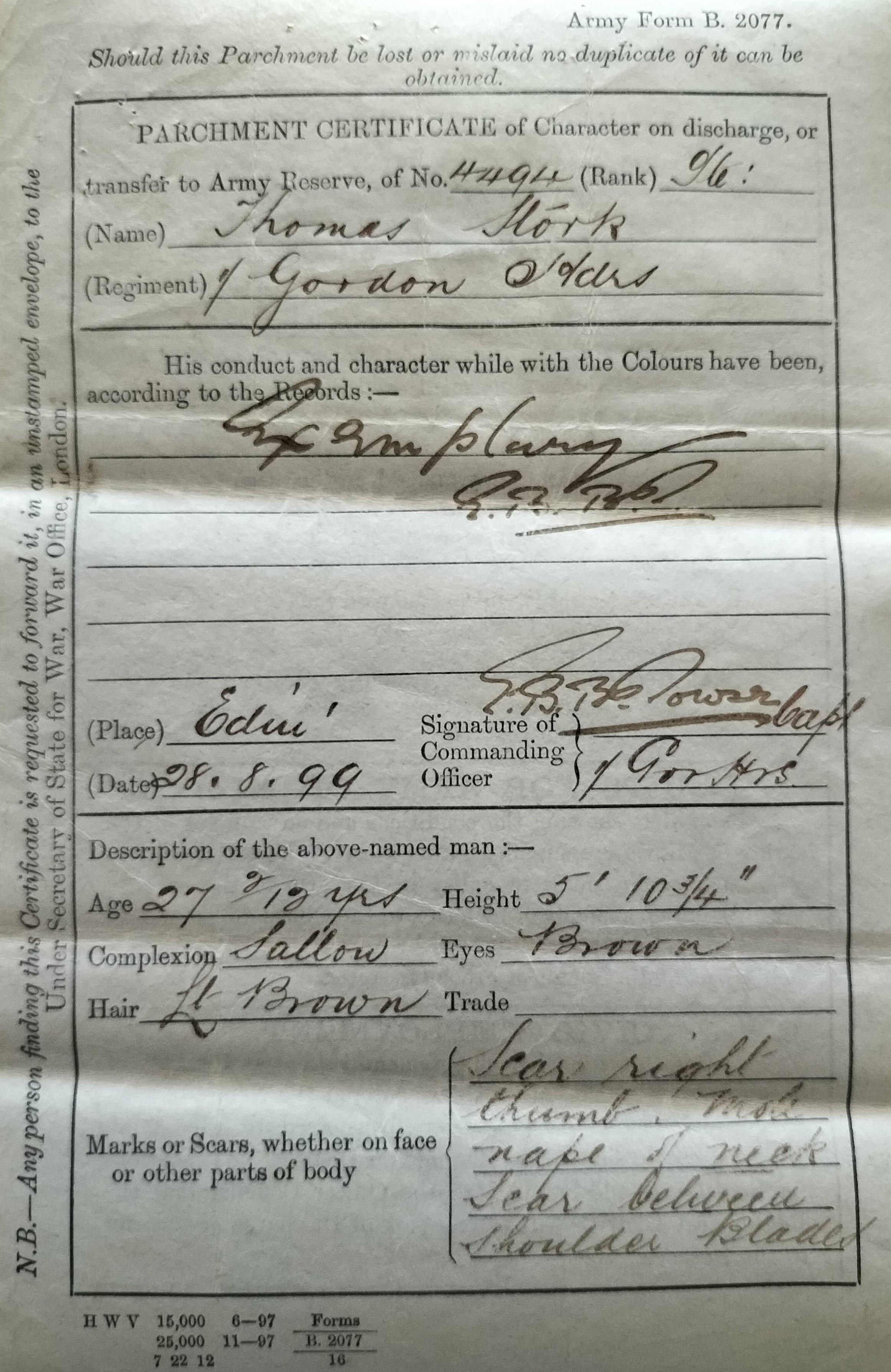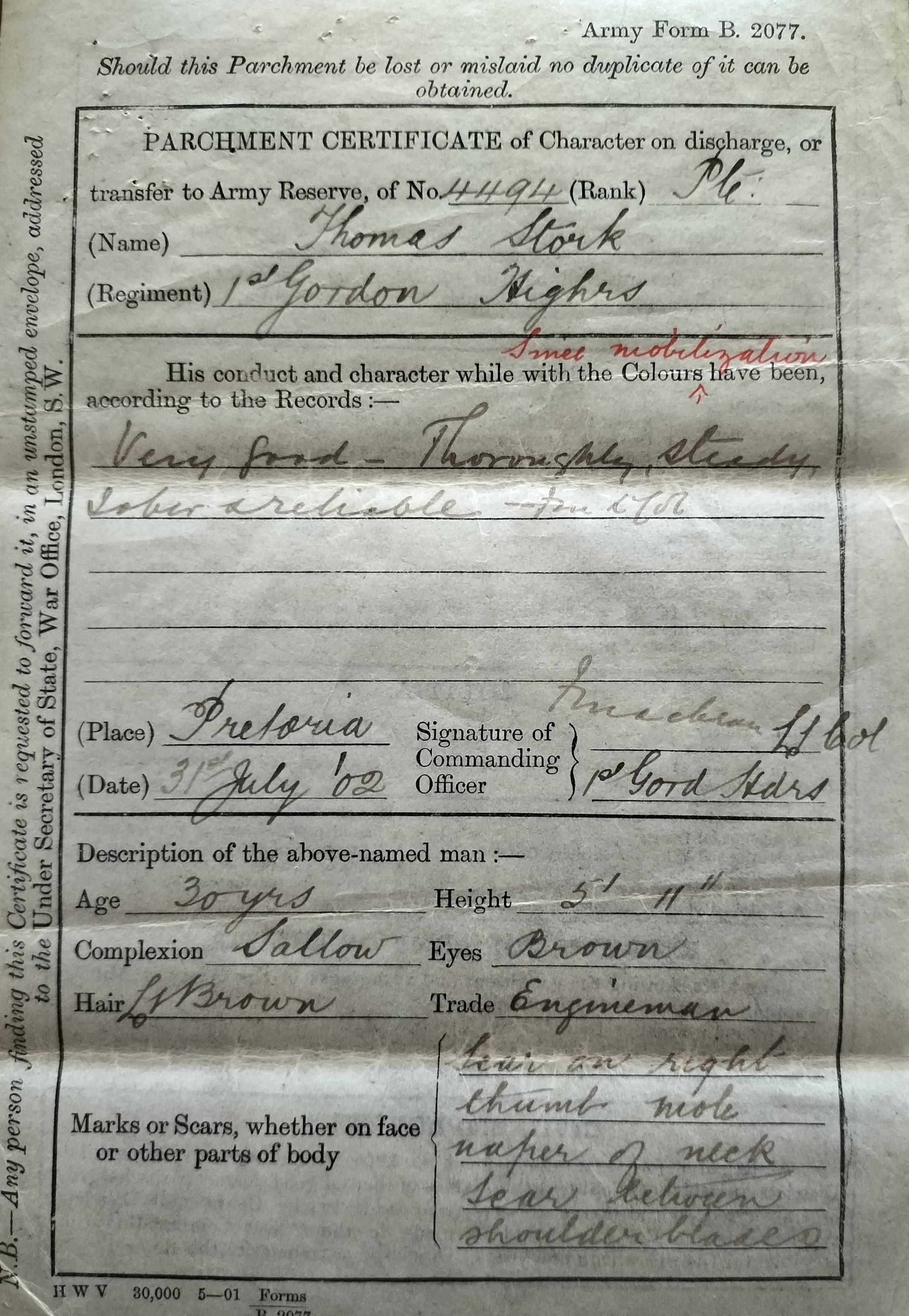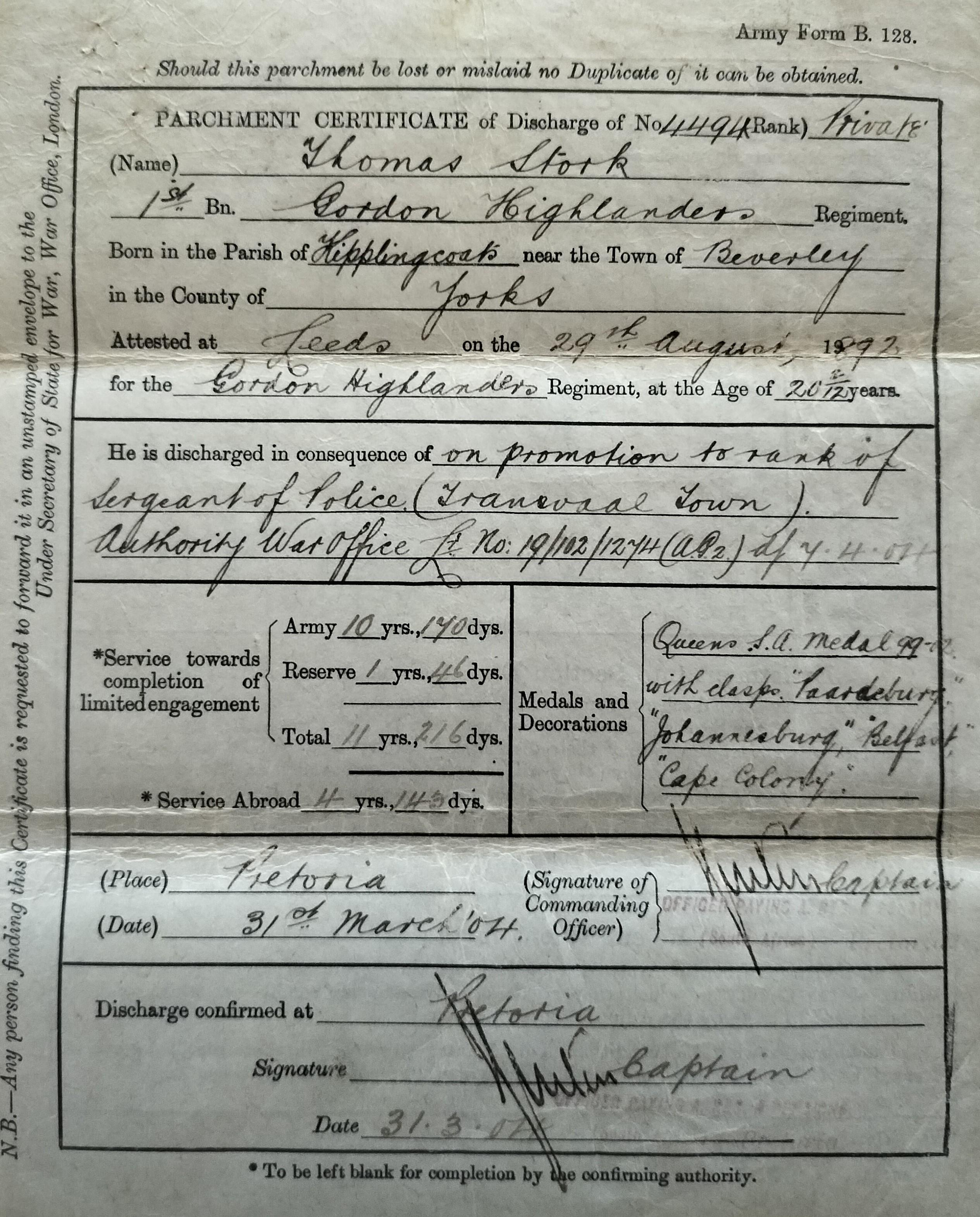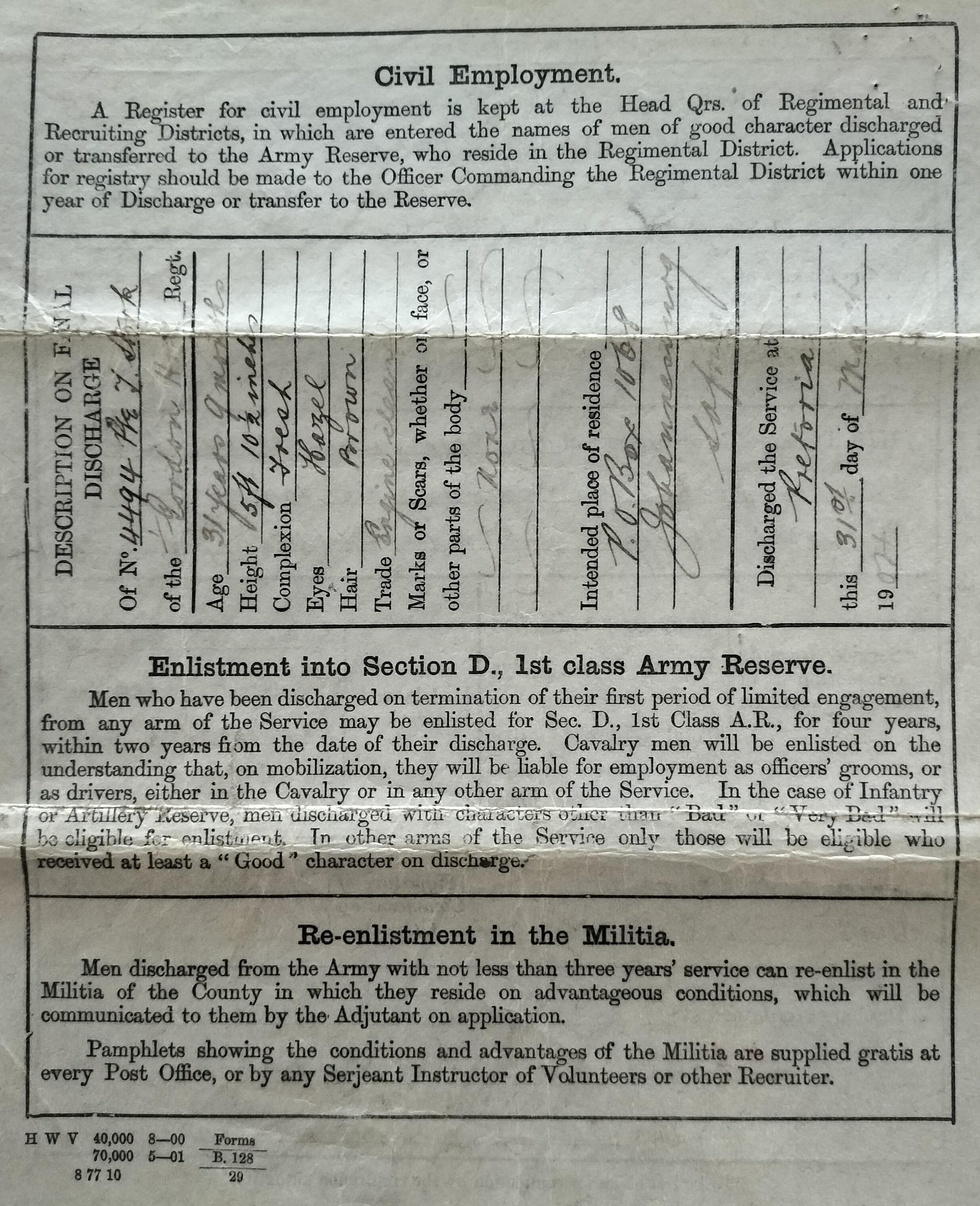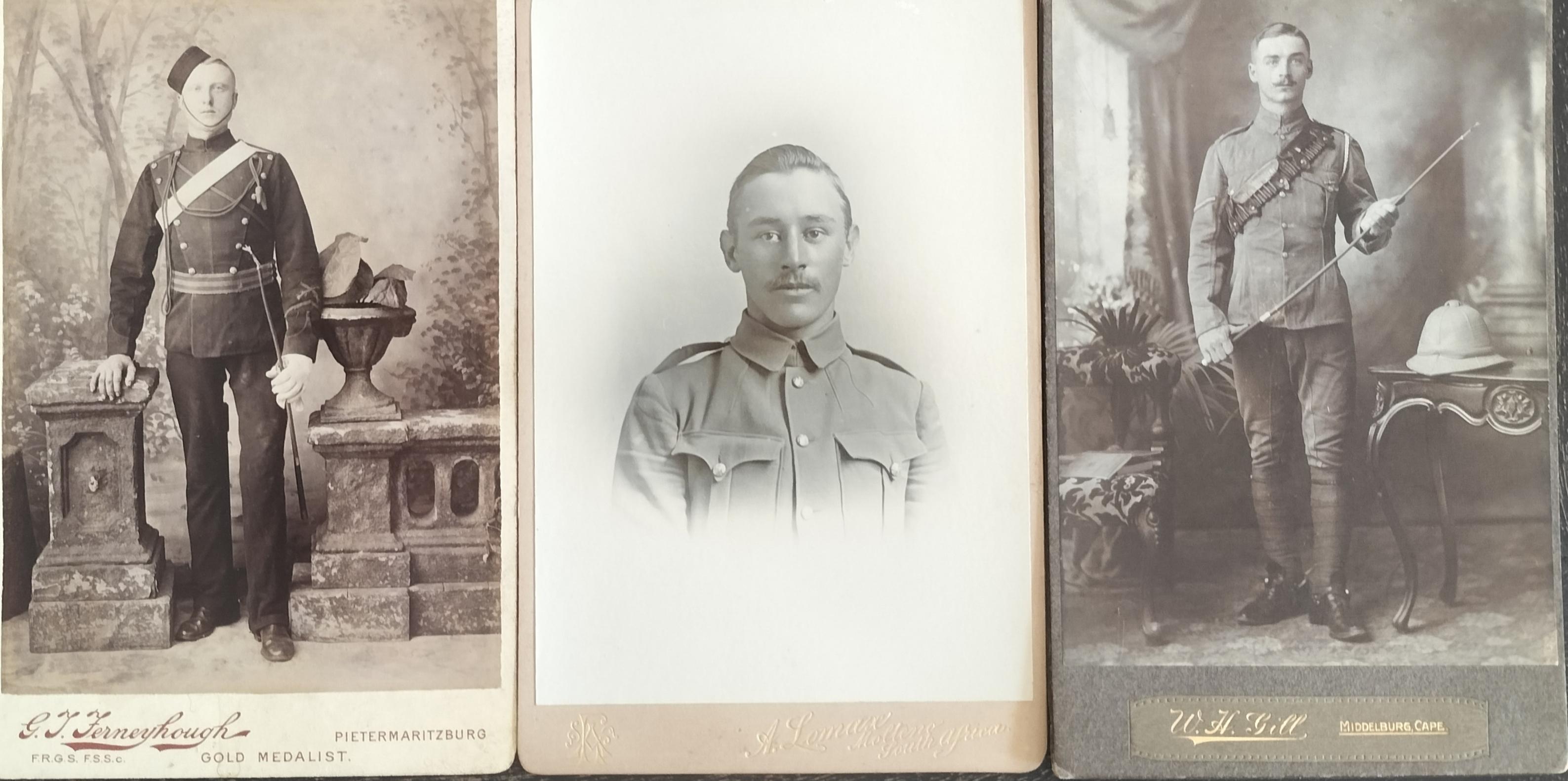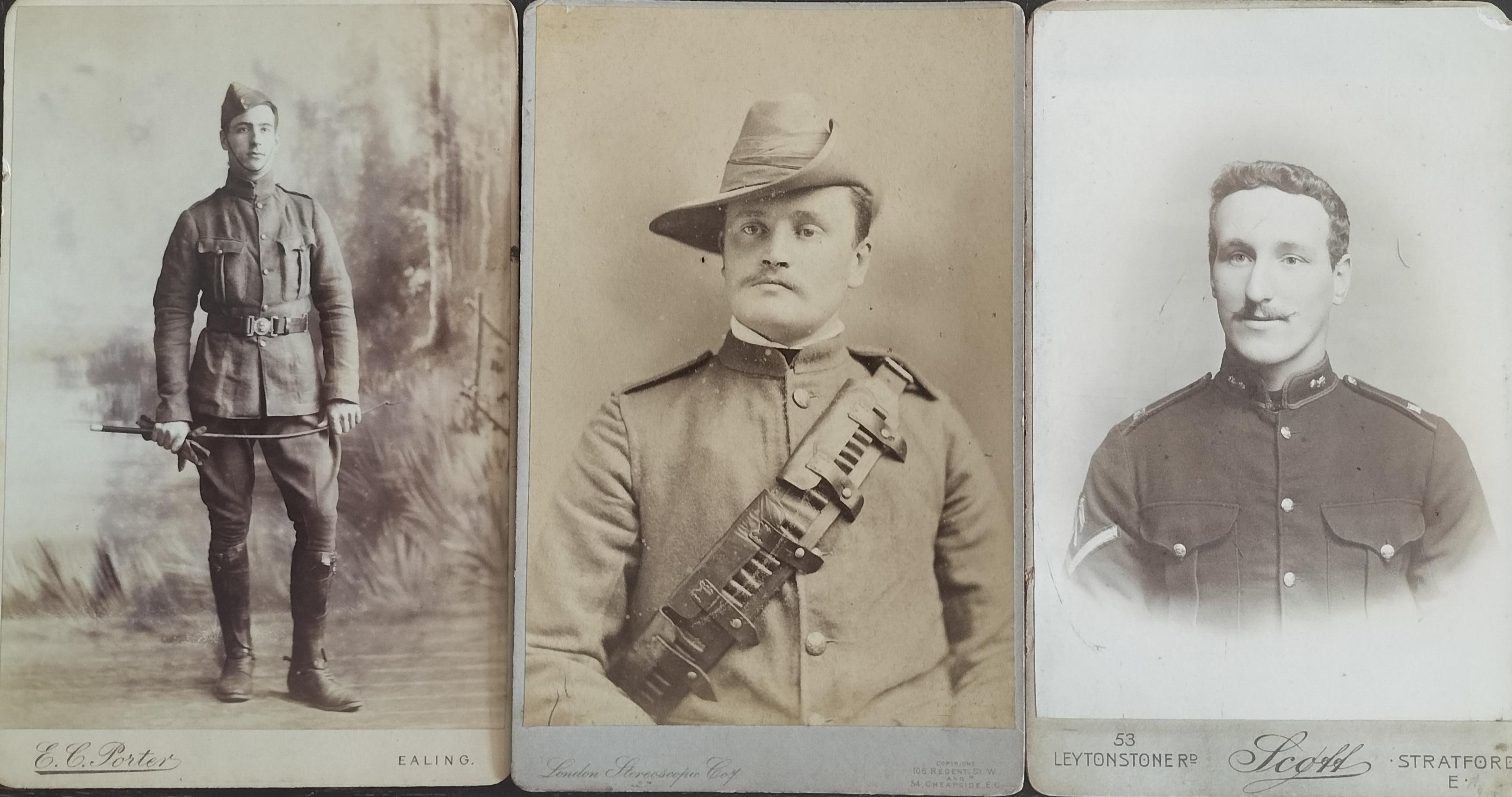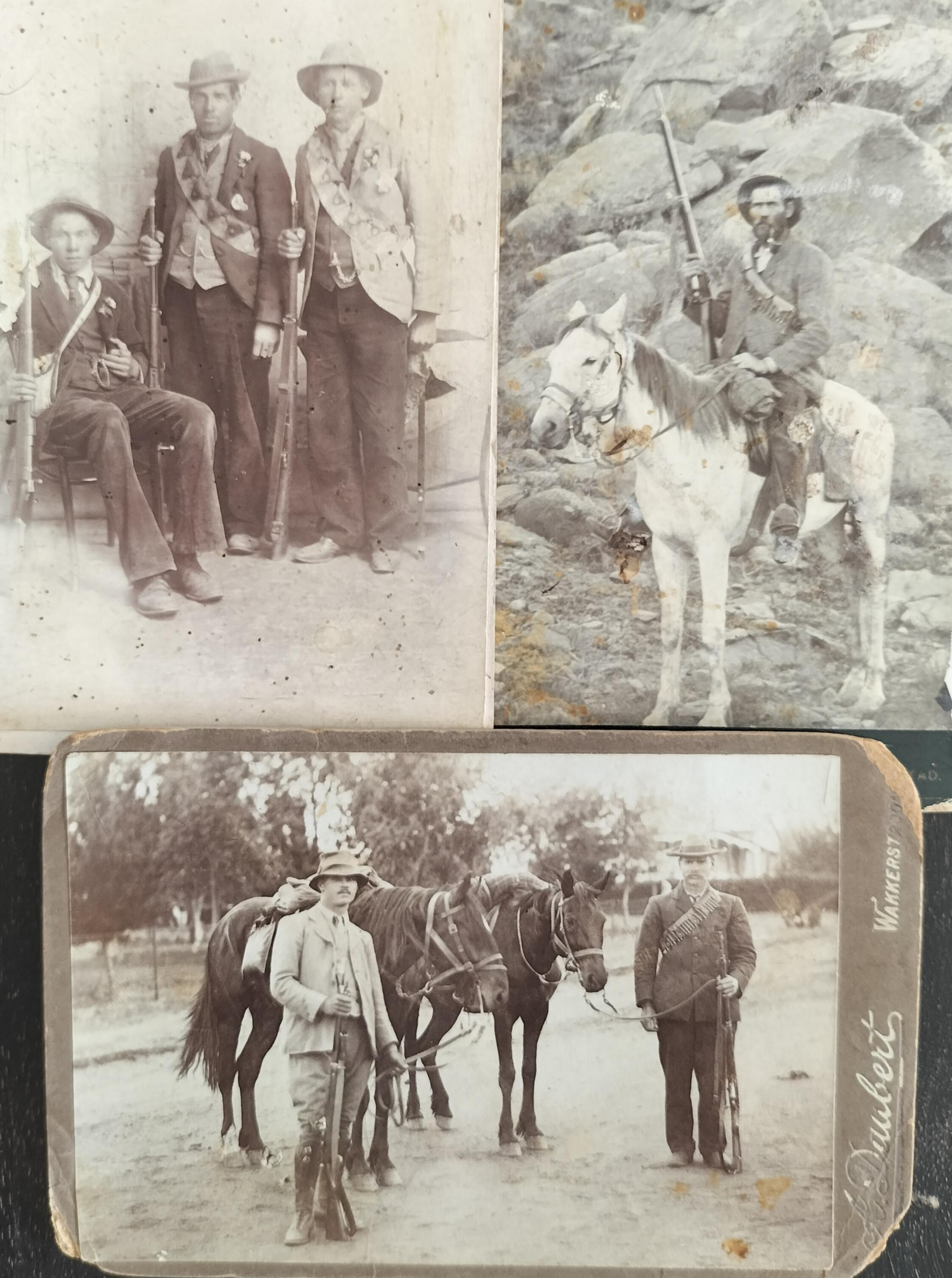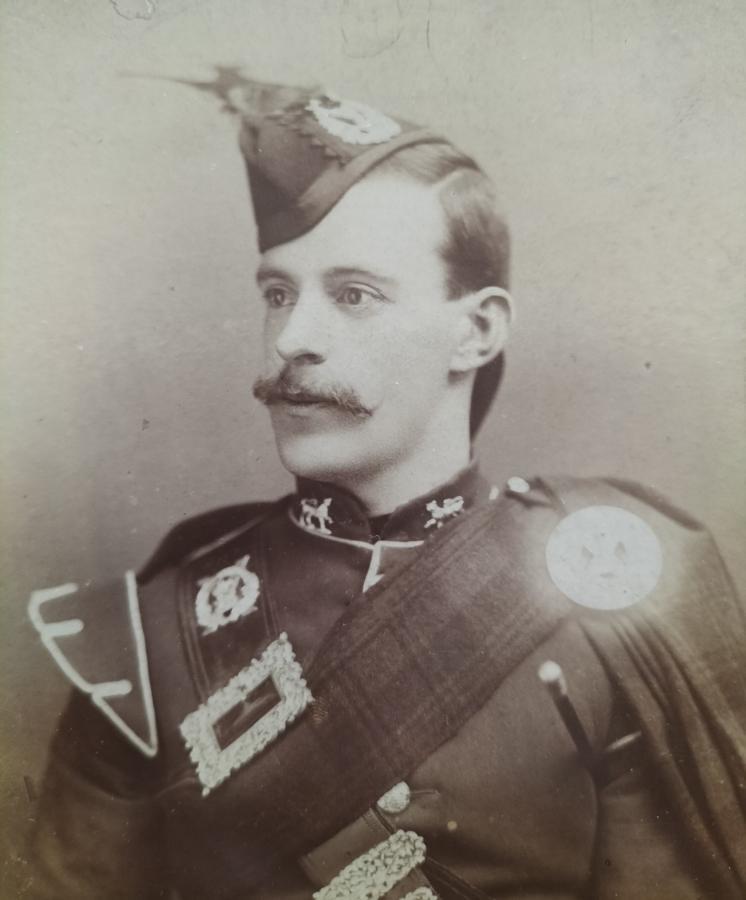
Disclaimer: Any views expressed by individuals and organisations are their own and do not in any way represent the views of The Heritage Portal. If you find any mistakes or historical inaccuracies, please contact the editor.
The Hardijzer Photographic Research Collection (HPRC) contains a considerable number of Cabinet Card format photographs of Anglo-Boer War soldiers, both Brit and Boer. Images in these formats are popular collector’s items, more so when the soldier whose likeness has been captured is known.
The Cabinet Card format photograph replaced the smaller Carte-de-Visite format photograph. The Cabinet Card format became the preferred photographic format produced by studios worldwide, also during the Anglo-Boer War.
The first South Africa-based photographer to have introduced the Cabinet Card format photograph was the Cape Town-based photographer SB Barnard (September 1867). This format only became universally adopted in 1868 and was in use until the early 1900s.
Ironically, even though introduced in 1867 in South Africa, the Cabinet Card only superseded the Carte-de-Visite format in South Africa from 1872 onwards. Although the popularity of this format waned internationally by the early 1900s, South African photographers used this format until the mid-1910s.
Once the photograph was captured and developed, it was pasted on a standard-sized cardboard (15.9 cm x 10.8 cm). The resultant Cabinet Card often contained the preprinted details of the photographer as well as the town where the studio was located. South African photographers mainly ordered these pre-printed cards from the UK or France.
During the Anglo-Boer War, soldiers, mainly British soldiers, had their likeness captured either before they left their hometowns in the United Kingdom, or whilst on South African soil, or their return home – these surviving images provide for a rich documentary military history.
While many of these Anglo-Boer War photographs were captured in studios abroad or on South African soil, some versions also exist of where the photographs were captured outdoors, be that of individual soldiers (on horseback for example), or groups of soldiers.
The sad reality is that a significant percentage of the photographs (90% plus) do not contain the name of the soldier, so when a photograph is found with a name recorded on it, it adds significant provenance to the photograph. See examples of Cabinet Card format photographs at the bottom of this article where the “sitters,” both Brit and Boer, are unknown.
I was fortunate enough to have obtained a Cabinet Card photograph, with associated military documentation, linked to the British soldier Thomas Stork. The photograph was captured by Northern England-based (Leeds) photographer Winterhalter. This photograph would have been captured before Stork departed for South Africa.
Significant to the Stork narrative is that he became a South African resident post the Anglo-Boer War conflict (1902).
Stork was born in 1872 in Kipplingcoats near the town of Beverley in the county of York.
Thomas Stork – A British Anglo-Boer War soldier
Thomas Stork was part of the 1st Battalion of the Gordon Highlanders who arrived in South Africa in time to participate in the Magersfontein conflict (December 1899). Following the disastrous performance of the Highland Brigade during the initial attack, two half battalions of Gordons were ordered in from the reserve to reinforce the front line. However, intense Boer fire from hidden trenches stalled the advance. The Commanding Officer of 1st Gordons at the time, Lieutenant Colonel Downman, was shot and mortally wounded during this conflict.
The five medals awarded to Stork following the Anglo-Boer War are recorded as the Queens SA medal 1899-1902, Paardeberg, Johannesburg, Belfast, and Cape Colony.
Mike Rowan, who curates the above Thomas Stork medals in his collection, states:
This group of medals has been lying in my collection for some years. The medals reflect a typical life of a serviceman coming to South Africa to fight and then staying to make a life. Private T Stork came to SA with the Gordon Highlanders and judging from the clasps on his QSA, saw a fair bit of action. He was wounded at Paardeberg on 18th February 1900. The QSA roll notes that he left the regiment to join the Johannesburg Police. He must have been a police officer for quite a while as in 1913 he won the rather fine Mayoral Shooting Trophy medal. He was a Sergeant at that stage. He was subsequently awarded the SA Police Faithful Service Medal. His rank is shown as Head Constable.
The military parchment certificates obtained with the single Cabinet Card photograph confirm the following about Stork’s career as a soldier and police officer:
- 29 August 1892 - Stork was attested (with military number 4493) at Leeds for Gordon Highlanders regiment at age twenty;
- 28 August 1899 – Stork transferred to the Army Reserve from 1 Gordon Highlanders. No trade is specified on the certificate. His conduct is described as exemplary;
- 9 November 1899 – Stork was recalled to the Colours (from the Army Reserve), exactly a month before he left for South Africa;
- 31 July 1902 – Stork transferred to the Army Reserve in SA from 1 Gordon Highlanders 31 July 1902. His trade is recorded as an “Engineman” on this document signed in Pretoria. His conduct is described as very good – thoroughly steady, sober, and reliable;
- 31 March 1904 – Stork is discharged from the Army Reserve following his promotion to the rank of sergeant of police (Transvaal Town). On this document Stork’s military service is recorded as 10 years and 170 days in the Army and 1 year and 46 days in the Army Reserve - with a total of 4 years 143 days recorded as service abroad.
Thomas Stork Parchment certificate, August 1899 - transfer from 1st Gordon Higlanders to Army Reserve whilst still in Edinburgh
Thomas Stork Parchment certificate, July 1902 - transfer from 1st Gordon Highlanders into Army Reserve in South Africa (Pretoria). Here his occupation is recorded as an Engineman.
Thomas Stork Parchment certificate of when he was transferred to Transvaal Town Police March 1904 on promotion to rank of Sergeant. This certificate has all medals and decorations recorded.
Back of Thomas Stork Parchment certificate (1904) above
Another record indicates that a Private Thomas Stork (Reg no 29131) was with the “Rand Rifles”. This corps was raised towards the end of 1900 and was employed on the defences of Johannesburg and of posts in the surrounding district. They also saw some skirmishing and some attacks on posts, but they were not in any big engagement and had few opportunities in gaining any distinction. The corps remained in service until the end of the war. The Rand Rifles Mine Guards helped to protect the goldmines against destruction. Given the rank and regiment number, it is unlikely to be the same Thomas Stork.
Thomas Stork - A South African resident and policeman
Stork arrived in South Africa in 1899 as a soldier aged 27 and passed away in Johannesburg 54 years later in Johannesburg (1953).
His death notice indicates that he passed away at the age of 81 and that he was a retired police officer. He resided at 311 Manhattan Court, Plein Street, Johannesburg at the time of his death.
Other than him being a career police officer, little else is known about Stork.
He married Alice Shurville, 10 years his junior, on 18 November 1908 in Johannesburg. She died in 1961.
Although no records have been found, it must be assumed that the couple had children.
This article could have been enriched with photographs of Stork and his family post the Anglo-Boer War era. I cannot help but wonder whether such photographs have survived.
More articles of this nature may appear in the future on both known British as well as Boer soldiers (as contained in the Hardijzer Photographic Research Collection).
Cabinet Card format photographs showing three unknown British soldiers. These photographs were taken in South Africa by (from left to right): Pietermaritzburg-based GJ Ferneyhough, Molteno-based A. Lomax and Middelburg-based WH Gill.
Cabinet Card format photographs showing three unknown British soldiers. These photographs were captured in the UK either before the soldiers left for South Africa or on their return from South Africa. The photographers are (from left to right): Ealing-based EC Porter, London Stereoscopic Company, and Scott from the Maryland Studio in Stratford.
Cabinet Card format photographs showing six unknown Boer soldiers. These photographs were taken in South Africa by (from left to right): Ladybrand-based Adolph Centner, Venterstad-based MJ Coetzee and Wakkerstroom-based A. Daubert.
Main image: Cabinet Card - Thomas Stork (circa 1898). Photographed by Leeds-based FC Winterhalter. Stork was attested at Leeds in August 1892 to the Gordon Highlanders Regiment at the age of 20
About the author: Carol is passionate about South African Photographica – anything and everything to do with the history of photography. He not only collects anything relating to photography, but also extensively conducts research in this field. He has published a variety of articles on this topic and assisted a publisher and fellow researchers in the field. Of particular interest to Carol are historical South African photographs. He is conducting research on South African based photographers from before 1910. Carol has one of the largest private photographic collections in South Africa.
Sources
- Hardijzer Photographic Research Collection
- Rowan, M. (2019). Medals to the Gordon Highlanders. (www.angloboerwar.com/forum/5-medals-and-awards)
- Unknown (Unknown). South African Units- Rand rifles. (www.angloboerwar.com/unit-information/south-african-units)
Comments will load below. If for any reason none appear click here for some troubleshooting tips. If you would like to post a comment and need instructions click here.

